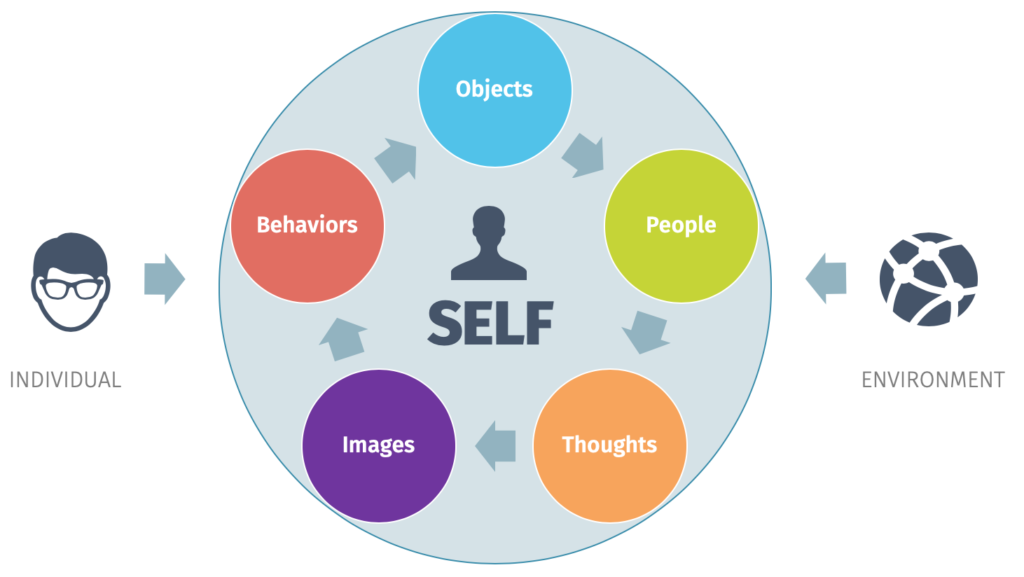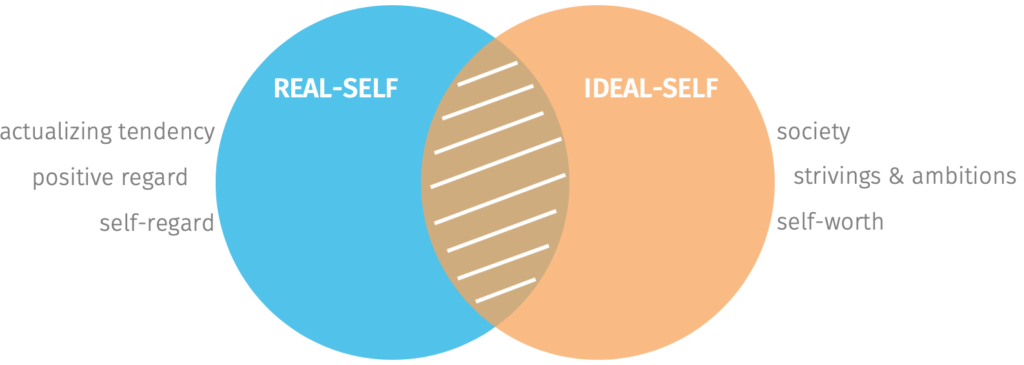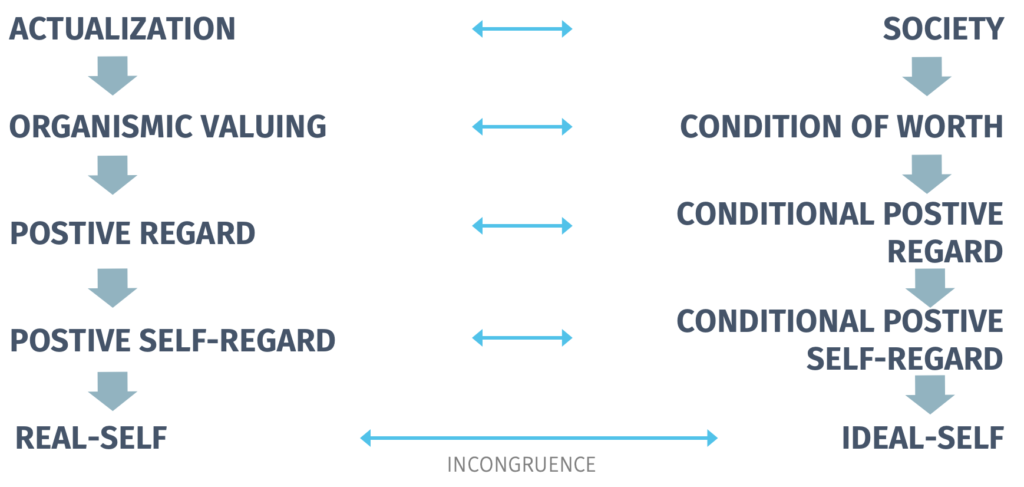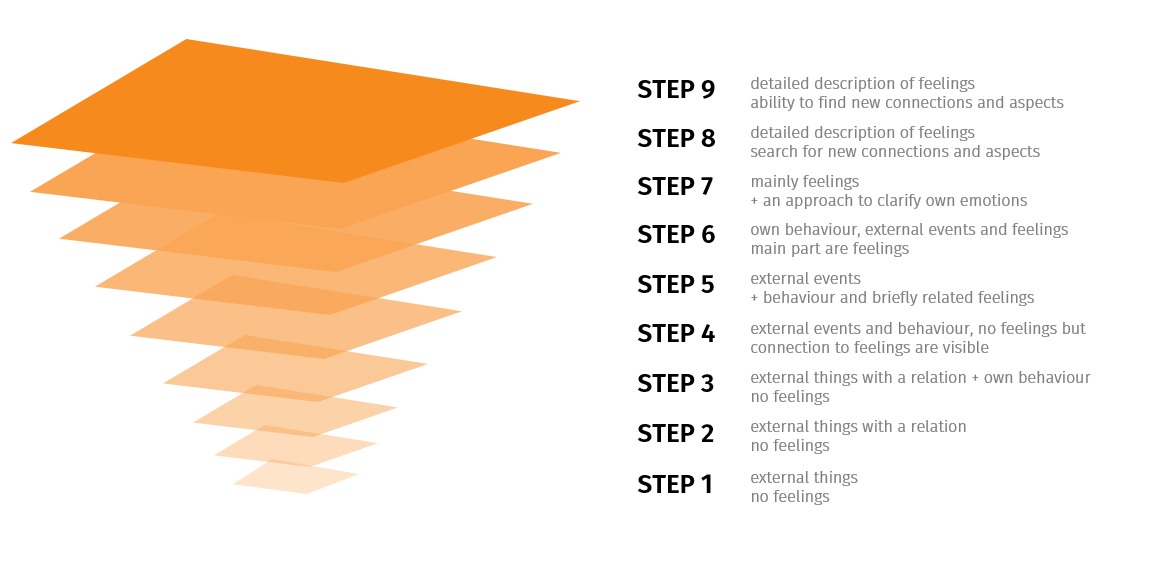Theory of Personality and Self-Exploration
Video-Link: https://www.youtube.com/watch?v=YoxzsWSH1Sw
Carl Rogers was a prominent psychologist and one of the founding members of the humanist movement. Along with Abraham Maslow, he focused on the growth potential of healthy individuals and greatly contributed to our understanding of the self and personality. Both Rogers’ and Maslow’s theories focus on individual choices and do not hold that biology is deterministic. They emphasized free will and self-determination, with each individual desiring to become the best person they can become.
Humanistic psychology emphasized the active role of the individual in shaping their internal and external worlds. Rogers advanced the field by stressing that the human person is an active, creative, experiencing being who lives in the present and subjectively responds to current perceptions, relationships, and encounters.
Rogers maintains that the human “organism” has an underlying “actualizing tendency”, which aims to develop all capacities in ways that maintain or enhance the organism and move it toward autonomy. […] This tendency is directional, constructive and present in all living things. The actualizing tendency can be suppressed but can never be destroyed without the destruction of the organism (Pescitelli, D., 2000)
Rogers based his theories of personality development on humanistic psychology and theories of subjective experience. He believed that everyone exists in a constantly changing world of experiences that they are at the centre of. A person reacts to changes in their phenomenal field, which includes external objects and people as well as internal thoughts and emotions.

The phenomenal field refers to a person’s subjective reality, which includes external objects and people as well as internal thoughts and emotions. The person’s motivations and environments both act on their phenomenal field.
Rogers believed that all behaviour is motivated by self-actualizing tendencies, which drive a person to achieve at their highest level. As a result of their interactions with the environment and others, an individual form a structure of the self or self-concept—an organized, fluid, conceptual pattern of concepts and values related to the self. If a person has a positive self-concept, they tend to feel good about who they are and often see the world as a safe and positive place. If they have a negative self-concept, they may feel unhappy with who they are.
Rogers further divided the self into two categories: the ideal self and the real self. The ideal self is the person that you would like to be; the real self is the person you actually are. Rogers focused on the idea that we need to achieve consistency between these two selves. We experience congruence when our thoughts about our real self and ideal self are very similar—in other words, when our self-concept is accurate. High congruence leads to a greater sense of self-worth and a healthy, productive life. Conversely, when there is a great discrepancy between our ideal and actual selves, we experience a state Rogers called incongruence, which can lead to maladjustment.

source: http://oer2go.org
This work is licensed under a Creative Commons Attribution-ShareAlike 4.0 International License
![]()
A person’s ideal self may not be consistent with what actually happens in life and experiences of the person. Hence, a difference may exist between a person’s ideal self and actual experience. This is called incongruence.
Where a person’s ideal self and actual experience are consistent or very similar, a state of congruence exists. Rarely, if ever, does a total state of congruence exist; all people experience a certain amount of incongruence.
The development of congruence is dependent on unconditional positive regard. Carl Rogers believed that for a person to achieve self-actualization they must be in a state of congruence.
According to Rogers, we want to feel, experience and behave in ways which are consistent with our self-image and which reflect what we would like to be like, our ideal-self.
The closer our self-image and ideal-self are to each other, the more consistent or congruent we are and the higher our sense of self-worth. A person is said to be in a state of incongruence if some of the totality of their experience is unacceptable to them and is denied or distorted in the self-image.
Incongruence is “a discrepancy between the actual experience of the organism and the self-picture of the individual insofar as it represents that experience.
As we prefer to see ourselves in ways that are consistent with our self-image, we may use defence-mechanisms like denial or repression in order to feel less threatened by some of what we consider to be our undesirable feelings. A person whose self-concept is incongruent with her or his real feelings and experiences will defend because the truth hurts.

Carl Rogers (1951) viewed the child as having two basic needs: positive regard from other people and self-worth.
How we think about ourselves, our feelings of self-worth are of fundamental importance both to psychological health and to the likelihood that we can achieve goals and ambitions in life and achieve self-actualization.
Self-worth may be seen as a continuum from very high to very low. For Carl Rogers (1959) a person who has high self-worth, that is, has confidence and positive feelings about him or herself, faces challenges in life, accepts failure and unhappiness at times, and is open with people.
A person with low self-worth may avoid challenges in life, not accept that life can be painful and unhappy at times and will be defensive and guarded with other people.
Rogers believed feelings of self-worth developed in early childhood and were formed from the interaction of the child with the mother and father. As a child grows older, interactions with significant others will affect feelings of self-worth.
Rogers believed that we need to be regarded positively by others; we need to feel valued, respected, treated with affection and loved. Positive regard is to do with how other people evaluate and judge us in social interaction. Rogers made a distinction between unconditional positive regard and conditional positive regard.
UNCONDITIONAL POSITIVE REGARD
Unconditional positive regard is where parents, significant others (and the humanist therapist) accepts and loves the person for what he or she is. Positive regard is not withdrawn if the person does something wrong or makes a mistake.
The consequences of unconditional positive regard are that the person feels free to try things out and make mistakes, even though this may lead to getting it worse at times.
People who are able to self-actualize are more likely to have received unconditional positive regard from others, especially their parents in childhood.
CONDITIONAL POSITIVE REGARD
Conditional positive regard is where positive regard, praise, and approval, depend upon the child, for example, behaving in ways that the parents think correct.
Hence the child is not loved for the person he or she is, but on condition that he or she behaves only in ways approved by the parent(s).
At the extreme, a person who constantly seeks approval from other people is likely only to have experienced conditional positive regard as a child.
Source: McLeod, S. A. (2014, Feb 05). Carl Rogers. Retrieved from https://www.simplypsychology.org/carl-rogers.html
This work is licensed under a Creative Commons Attribution-Noncommercial-No Derivative Works 3.0 Unported License.

THUS…
According to Rogers, who are able be self-actualize, are called fully functioning person. the closer the person`s self-image and self-ideal are each other, the more congruent or consistent and the higher person`s sense of self-worth.
Incongruent behaviours result from incongruence, which are inconsistent with conditions of worth, are either denied or distorted completely to awareness. Experience incongruence indicates a basic inconsistency in the self.
How can we dissolve an incongruity?
After the client recognizes that he/she is responsible (not the coach) for all his/her actions, he/she should inquire all problematic issues that causes his/her mismatches between real self and ideal self
The most promising way is the self-exploration supportive accompanied by the transition coach through the non-directive coaching method
Self-exploration in this context looking at your own thoughts, feelings, behaviours and motivations and asking why. It is looking for the roots of who we are and looking for answers to all the questions we have about ourselves
Finally, indicated more as an advice than a law, Rogers describes a fully functioning / psychologically healthy person by using indicators. Here you can find the 5 most important indicators
- OPENNESS TO EXPERIENCE. A growing openness to experience – they move away from defensiveness and have no need for subception (a perceptual defence that involves unconsciously applying strategies to prevent a troubling stimulus from entering consciousness).
- EXISTENTIAL LIVING. An increasingly existential lifestyle – living each moment fully – not distorting the moment to fit personality or self-concept but allowing personality and self-concept to emanate from the experience. This results in excitement, daring, adaptability, tolerance, spontaneity, and a lack of rigidity and suggests a foundation of trust. “To open one’s spirit to what is going on now, and discover in that present process whatever structure it appears to have” (Rogers 1961)
- ORGANISMIC TRUSTING. Increasing organismic trust – they trust their own judgment and their ability to choose behaviour that is appropriate for each moment. They do not rely on existing codes and social norms but trust that as they are open to experiences they will be able to trust their own sense of right and wrong.
- EXPERIENTIAL FREEDOM. Freedom of choice – not being shackled by the restrictions that influence an incongruent individual, they are able to make a wider range of choices more fluently. They believe that they play a role in determining their own behaviour and so feel responsible for their own behaviour.
- CREATIVITY.it follows that they will feel more free to be creative. They will also be more creative in the way they adapt to their own circumstances without feeling a need to conform.
In literature you will find 2 more indicators
RELIABILITY AND CONSTRUCTIVENESS– they can be trusted to act constructively. An individual who is open to all their needs will be able to maintain a balance between them. Even aggressive needs will be matched and balanced by intrinsic goodness in congruent individuals.
A RICH FULL LIFE– Rogers describes the life of the fully functioning individual as rich, full and exciting and suggests that they experience joy and pain, love and heartbreak, fear and courage more intensely. Rogers’ description of the good life.
Source: https://en.wikipedia.org/wiki/Carl_Rogers
This work is licensed under a Creative Commons Attribution-ShareAlike 4.0 International License
![]()
Self Exploration
We (as coaches) are accompanied by the question of how long the duration of the coaching will be. Often the duration is limited by financial aspects. If we follow an integral concept, the duration depends primarily on the needs of the client, our own professionalism and on some indirect factors. It is clear to us that we must set goals together after building a sustainable coach-client relationship. Determining the goals includes the aspect, that the grade of achievement need to be reflected at regular intervals and measured by degrees of attainment. On the one hand we have a number of psychometric test procedures available for this purpose. On the other hand, we immediately need an impression, while reflecting on the meta-level of communication during a coaching conversation. By internalising the self-exploration scale of A. + R. Tausch, we have a tool to reflect what has just happened to the client, how the methods have supported the development of the client and which impact has the coach-client relationship in this context.
Video-Link: https://www.youtube.com/watch?v=4-J2e5HUNRo
Self-exploration means looking at your own thoughts, feelings, behaviours and motivations and asking why. It is looking for the roots of who we are and looking for answers to all the questions we have about ourselves. This scale was first operationalised by C.B. Truax and afterwards revised by R. Tausch 1969.
The major task of the coach in this context is to help the client that he/she will get the bottom of client’s problem, inspire and stimulate client’s self-exploration (see chapter non-directive coaching).
Reinhard Tausch delivered descriptions for every step, which allows the coach to measure exactly the degree of client’s self-exploration

The upside-down pyramid built by nine rectangles with different level of transparency and size. Both symbolizes that the more the client go on in his/her self-exploration the more he/she can expand the perception of feelings, emotions and thoughts and their backgrounds as well as the ability to gain self-competence to pursue self-development.
source: R. Tausch Erziehungspsychologie. Begegnung von Person zu Person. Göttingen 1969
Quote R. Tausch (1969) “Scale for assessment of client’s self-exploration”
Step 1 – The client does not talk about himself, either about his behaviour or his feelings. He speaks exclusively about facts, which are independent of his person
Step 2 – The client does not report about himself, either about his behaviour or about his feelings. He speaks only about persons and / or things that are related to him (for example, his parents and his car).
Step 3 – The client reports about external events and his own behaviour, without speaking about the related feelings.
Step 4 – The client reports about external events and also about his own behaviour, without speaking about the related feelings. The coach can assume that his / her statements are connected with feelings or of greater importance for him/her.
Step 5 – The client reports about his own behaviour or external events and the related feelings. The main part of the statement consists in the description of his/her behaviour or external events, the feelings are briefly mentioned.
Step 6 – The client reports about his/her own behaviour or external events and about the related feelings. The statement consists mainly a description of his feelings.
Step 7 – The client mainly reports about his/her feelings. In addition, the coach must notice an approach of the client to clarify his emotions, to see them in new contexts and to ask him-/herself where certain attitudes come from.
Step 8 – The client describes his/her feelings in detail and clearly expresses the search for new aspects and connections in his/her experience.
Step 9 – The client describes his/her feelings in detail. It is clear that he/she finds new aspects and connections in his/her experience.
source: https://de.wikipedia.org/wiki/Selbstexploration
This work is licensed under a Creative Commons Attribution-ShareAlike 4.0 International License
![]()
 The European Commission support for the production of this publication does not constitute an endorsement of the contents which reflects the views only of the authors, and the Commission cannot be held responsible for any use which may be made of the information contained therein.
The European Commission support for the production of this publication does not constitute an endorsement of the contents which reflects the views only of the authors, and the Commission cannot be held responsible for any use which may be made of the information contained therein.
